Glider Oxygen System Guide
Oxygen systems can seem quite complicated, but there are only four parts to any oxygen system and two are predetermined. An oxygen system consists of:
- A Bottle
- A Regulator
- A Delivery Unit
- A Cannula/Facemask
Bottles and regulators cause the most confusion so we will start here.
1. Selecting the Correct Oxygen Bottle
There’s a seemingly large amount of choice when it comes to cylinders. You not only have a wide array of sizes but also several materials to choose from. While we will explain the different materials further down in this guide, in reality, your glider determines which bottle you will need and it is based predominantly on size.
Over the years we have created a small database of which bottle goes in which glider, which you can find here. If your glider isn’t listed, the next best step is to ask the manufacturer and if that is not possible or convenient, then it’s time to get the tape measure.
Measurements:
- Bottle Clamp Diameter: Measure the diameter of the mount where the bottle will sit. This ensures it will fit securely. Some gliders like the DG range and many Schleichers do not have a bottle clamp and instead have a bottle compartment and rely on a neck clamp to secure the bottle. You still want a bottle that will fit snugly inside the compartment.

- Length of oxygen compartment (DGs, Schleichers, JS, HPH Shark)
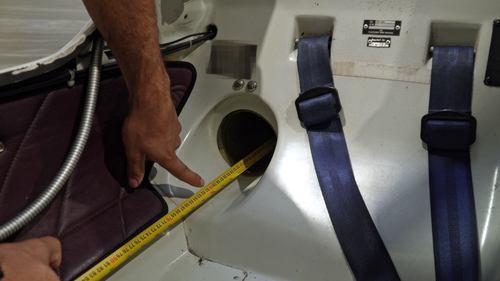
- Neck Clamp to Bulkhead Distance (Schempp-Hirth): This will give you the maximum height the bottle can be.
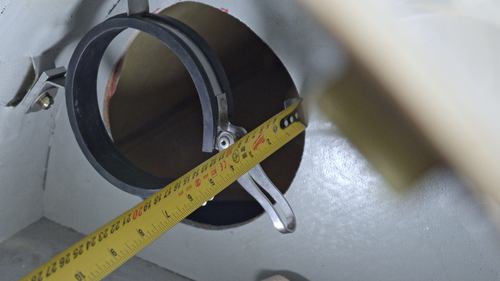
- Neck Clamp to Bottle Clamp Distance (Schempp-Hirth): This will give you the minimum height of the bottle can be.
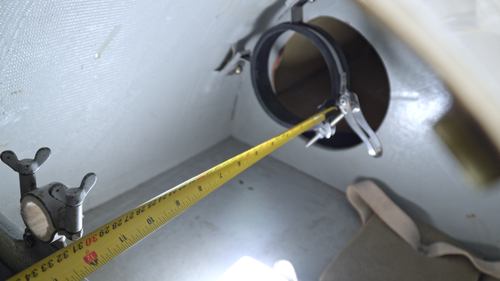
Armed with these measurements, you can now look at our buyers guide and identify which bottle will be suitable for your glider. You should also measure the diameter of the neck clamp. If your glider uses a neck clamp, and you need a Mountain High bottle due to size constraints, then you probably need a neck extender for the neck clamp to work.

Another factor to consider is the gauge - will you be able to see it in flight or at least check it regularly on the ground? If the answer is no, consider opting for a remote electronic gauge mounted in your instrument panel for better monitoring during flight.
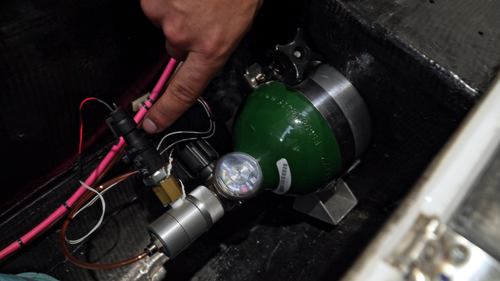

Finally, Mountain High requires that their bottles be hydrostatically tested every five years. Their Aluminium bottles are the most popular bottles we sell and are a lifetime cylinder, meaning that they have no life limit, as long as they pass the five-year hydrostatic test. Their Carbon and Kevlar bottles are much lighter, which makes them easier to fit in and take out of your glider, especially if it's buried away in a tight awkward space. They also require hydrostatic testing every five years and have a fifteen-year life limit, meaning that they have to be replaced after fifteen years.
In some gliders the oxygen cylinder is mounted way back in the fuselage behind the centre of gravity of the aircraft. If this is the case for you - you may need to re-weigh the glider or at least perform a re-calculation of your minimum and maximum cockpit weights with the bottle fitted. This is particularly important if you are close to the minimum cockpit weight limit in your glider.
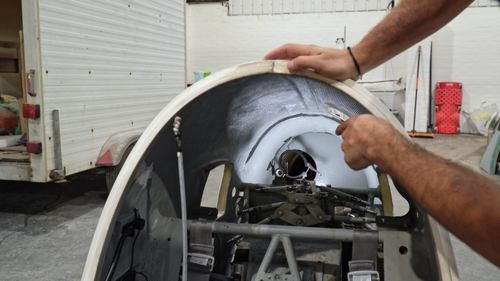
2. Selecting the Correct Regulator
There are two primary types of regulators you will encounter:
Your bottle type determines which regulator you'll need.
Our aluminium, kevlar and carbon bottles are manufactured by Mountain High and being an American Company, they feature the CGA540 thread - they also come pre-fitted with a gauge. Our Steel bottles are sourced from Europe and therefore feature the DIN477 thread and do not come with a gauge.
- CGA 540 (typically without a gauge)
- DIN 477 (typically with a gauge)
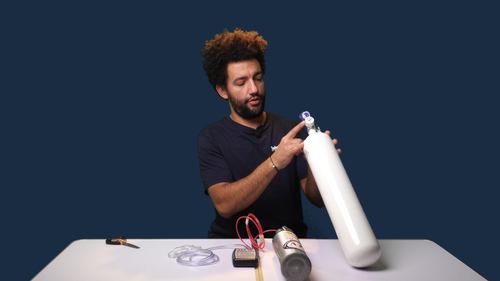
You can probably see where this is going but to summarise: if you’re buying a Mountain High bottle from us then you need the CGA540 regulator without a gauge; if you’re buying a steel bottle from us then you need the DIN477 regulator with a gauge. A word of warning though, Mountain High can supply bottles with other types of thread so if you sourced your bottle elsewhere then you will need to verify what kind of thread you have.
If there's anything else specific that you need, then get in contact with us and we can help you.
3. Selecting the Right Delivery System
You have two main options for delivering oxygen during flight: Electronic Delivery System (EDS) or Constant Flow System.
We believe the EDS system is the gold standard and it's what most people go for. It's a pulse demand system, meaning that as it detects you breathing in, it delivers a pulse of oxygen, and the quantity of oxygen changes depending on your altitude. This makes it extremely efficient, making bottle refills less frequent, and it's also a really low workload because you don't need to interact with it in flight. You turn it on, set it, and forget it.
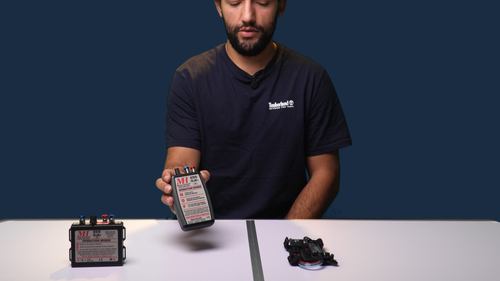
The system can also detect if there’s a leak in the system, if you’re not breathing or if you’re out of oxygen and alert you to the problem. A two-seater variant with two independent outlets is available and it can be used by a single pilot with no loss in efficiency.
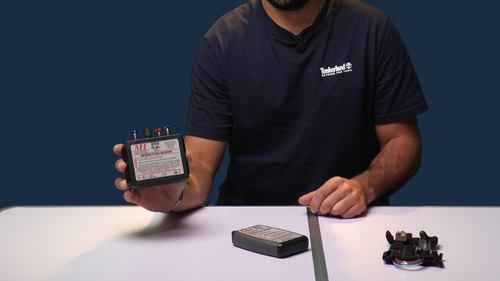
For the more budget-focused pilot, the constant flow system might be more appropriate. As the name suggests, it delivers a constant flow of oxygen and as a result, it will use a lot more oxygen. It's extremely simple so you don't need any batteries, however, being very simple you have to manually adjust it as you gain and lose altitude. There's no warning if the oxygen supply fails. And again, there's no warning if there's a leak somewhere in the system.
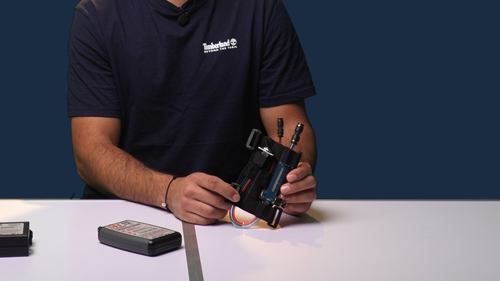
To summarise:
EDS (Electronic Delivery Systems):
- Efficiency: EDS systems are more efficient, delivering oxygen only when you breathe, which conserves supply.
- Altitude auto-adjustment: They automatically adjust oxygen levels based on your altitude.
- Safety Features: EDS units will warn you if oxygen flow is interrupted or you stop breathing.
- Low Workload: Once set, there’s no need for adjustment, allowing you to focus on the flying.
Constant Flow Systems:
- Simplicity: These systems deliver a constant flow of oxygen but require manual adjustments as you change altitude.
- Higher Oxygen Consumption: They consume more oxygen compared to EDS systems, as oxygen flows continuously.
- No Batteries Required: Constant flow systems are more basic and don’t need a power source.
4. Cannulas and Face Masks
The final piece of the puzzle is the cannula or mask.
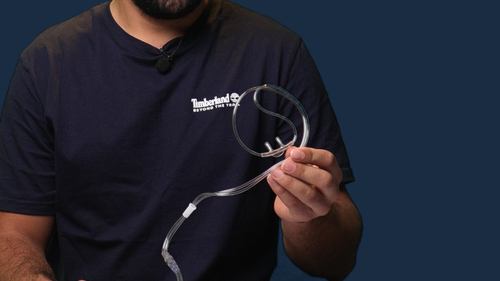
The cannulas are far more comfortable. So most people prefer to use the cannulas as much as they can. Although above 18,000 feet, you should be using a face mask. They are a bit less comfortable but deliver oxygen far more reliably.
For EDS systems there is also the option of a flare-tip cannula. This just has a wider aperture where the cannula goes into your nose. It's for people with larger nostrils who are finding that the EDS is not reliably giving them a pulse of oxygen when they breathe in. If that's you, then you're better off with a flare-tip cannula. All of these, the two cannulas and the face mask come with a standard EDS kit.
The constant flow system has its own type of cannula and face mask. They've usually got either a mixing bag or an oximizer because obviously, you don't want a pure oxygen delivery straight to your nose.
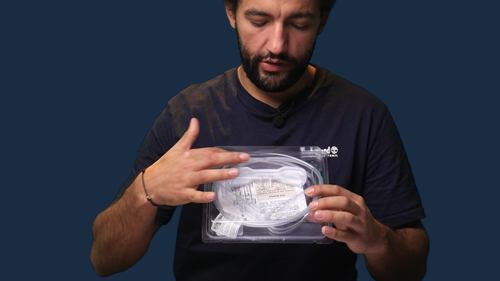
5. Refilling Your Oxygen Cylinder
Oxygen systems have to be shipped empty, so the first job (after verifying that the system fits your glider) is to fill it with Oxygen. First check that the wave site you are visiting can fill it for you when you get there. If not, then you will most likely need to take it to a dive shop, but they're unlikely to have the right adapters to be able to fill your bottle.
For the CGA540 bottles we sell filling adapters, which you can find here.
For the DIN477 bottles we rent the adapters, which you can find here.

Occasionally we find some dive shops refuse to fill aviation grade bottles. Unfortunately, there is not much you can do other than try another dive shop, or try a gliding wave site, failing that try asking other pilots at your gliding club.
And that's all there is to it - we hope you feel more prepared now that you understand how oxygen systems work!
Take a look at our buyer’s guide to work out which system is best for you.